By Peggy Rice representing the Ways and Means Committee
Jon Klassen
This talented Canadian animator, author and illustrator of children’s books, has illustrated several children’s books, most notably, his first children’s book that is both written and Illustrated by him. I Want my Hat Back (2011) is the winner of The Theodor Seuss Geisel Award, The Caldecott Award, and the Kate Greenaway Medal. Art for Auction: Jon has contributed a 5.5 x 7.5 in. monochromatic illustration from his latest publication, The Skull (2023) a retelling of a traditional Tyrolean folktale. The eerie illustration includes the two main characters, the skull who lives in a big, abandoned house and a brave girl named, Otilla, who visits the house. Raissa Figueroa
This talented children’s book illustrator and graphic designer is based in San Diego California. She won the 2022 Coretta Scott King Illustrator Award for her contributions to We Wait for the Sun. Art for Auction: Raissa has contributed an 8 x 10 inch expressionistic, watercolor illustration from Small-Girl Toni and the Quest for Gold (2023). Written by Giselle Anatol and illustrated by Raissa, this original tale was inspired by the life and works of Toni Morrison. Toni, as a young child, is featured in the illustration. Kaz Windness
This talented author and illustrator of picture books loves to make her readers laugh. Many of her books are animal fantasy with characters overcoming an internal conflict, such as finding the courage to face a fear. Art for Auction: Kaz has contributed an 8 x 10 inch, matted, watercolor illustration from her most recent book that she wrote and illustrated, Bitsy Bat, School Star (2023). The illustration depicts Bitsy, a little bat with big star dreams, struggling to fit in at her new school. Nikkolas Smith
This talented author and illustrator of children’s books, whose work is influenced by Nina Simone and Norman Rockwell, describes himself as an “artivist.” He illustrated the picture book, The 1619 Project: Born on the Water (2021) which was ranked number one on the New York Times Best Seller List Children’s Book category. Art for Auction: Nikkolas has contributed a 9.5 x 11 inch illustration from Black Panther Wakanda Forever: The Courage to Dream (2022). Loose brushwork and mural-style images add energy that show Assata’s light, as she develops the courage to dream despite her disability. Jade Orlando
This talented illustrator is a former children’s apparel artist. She has contributed colorful illustrations to several books for babies, such as Ally Baby Can be an Eco-Activist, Ally Baby Can be AntiRacist and Ally Baby Can be A Feminist. Art for Auction: Jade has contributed a 14 x 14 inch, expressionistic illustration from I’m Going to Be a Princess (2023) written by Stephanie Taylor. The colorful illustration features, Maya, who is captivated by the achievements of a brave Nigerian princess. Frane Lessac
A noted author and illustrator of more than fifty books, Frane is an American living in Australia. She is inspired by her travels. Several of her books are informational books, such as Australian Baby Animals (2019) and Australia Under the Sea 1, 2, 3 (2020). Notably, she illustrated Traci Sorell’s books, We Are Grateful (2018) and We Are Still Here! (2021), each honored by the American Indian Library Association. Art for Auction: Frane has contributed a 21.5 x 13.5 in. illustration from We Are Still Here (2022) written by Traci Sorell. The primitive folk art depicts a diverse group attending Indigenous People’s Day presentations at a Native Nations Community School. Cori Doerrfeld
This New York Times bestselling author and illustrator has illustrated numerous picture books for other authors, as well. Her debut picture book as an illustrator, Welcome to your World, Baby (2008) was written by Brooke Shields. Her colorful illustrations vary in style and include many animal friends. Art for Auction: Cori has contributed an 11 x 14 watercolor, from Beneath (2023), a story that she wrote and illustrated. The insightful illustration conveys the theme, “There is always more under the surface than we can see.” It depicts the trees’ roots, dirt and rocks under the ground, while Finn and their grandfather are hiking in the woods.
She has also contributed a 5x7 original ink drawing of two owls seen by Cori and his grandfather on their hike in the woods in Beneath (2023). Camilla Sucre
This talented Caribbean American artist was born in New York and grew up in Baltimore. She is passionate about illustrating children’s books. Art for Auction: Camilla has contributed a vibrant 9.5 x 15.5 illustration from Granny Came Here on the Empire Windrush (Lawrence, 2023) that depicts Ava and her grandmother. The use of yellow contributes to the warmth of the intergenerational story that introduces the experiences of African Caribbeans who traveled across the Atlantic to build a life in England. Peggy S. Rice is an associate professor in the Department of Elementary Education at Ball State University in Muncie, Indiana. She is a member of the Ways and Means Committee for CLA. By Andrea M. Page and Jackie Marshall ArnoldWe invite you to the Children's Literature Assembly’s annual event at the 2023 NCTE Convention. Enjoy breakfast with our Keynote Speaker, award-winning author Traci Sorell. The breakfast is Sunday, November 19th, from 7:00am to 8:45am EST in Short North A of the Grand Columbus Convention Center.
If you are a veteran of our CLA Breakfast, you already know what an amazing experience it is! If you have not had the opportunity yet, we invite you to join us for Sunday’s breakfast with an incredible author. Find out what you’ve been missing. The CLA Breakfast is a wonderful opportunity to meet others who are passionate about children’s literature, engage in learning from Traci Sorell, and perhaps go home as a winner of a robust set of award-winning books or an original piece of beautiful art! We hope to see you there! Andrea M. Page (Hunkpapa Lakota) is a board member of the Children’s Literature Assembly and serves as the Co-Chair for the 2023 CLA Breakfast Committee. She is a children’s author, educator and speaker. She lives in Rochester, NY. Jackie Marshall Arnold is a member of the Children’s Literature Assembly and serves as the Co-Chair for the 2023 CLA Breakfast Committee. She is an associate professor at the University of Dayton in Dayton, OH. By Sara K. Sterner, Lisa Pinkerton, and Mary Ann CappielloCLA Expert Class 2023: Nodes of Literary Connection—How Culturally Diverse Imprints are Building Pathways for More Inclusive and Representative Children’s Literature | Saturday, November 18, 2023 from 5:45 PM - 7:00 PM EST (GCCC Room B-130-132)
In collaboration with Ellen Myrick, President and Chief Marketer, Publisher Spotlight, the 30th annual Expert Class will feature an impressive gathering of authors, illustrators, publishers, and organizations that are influencing the landscape of inclusive representation in children’s literature for readers and creators alike (Menefee & Johnson, 2021; Rosenberg, 2022). Recognizing a continued dearth of diverse books for young readers, especially those written by diverse creators, the demand for more authentic representation in children’s publishing remains an issue (Menefee & Johnson, 2021). In response, small publishers and imprints are shifting the field—creating extended publishing pathways for inclusive books that serve as authentic nodes of literary connection for young readers. This Expert Class explores a movement in the publishing industry working to expand representation in children's literature that has been woefully lacking in the field. It is our goal that participating in the session will help individuals to build nodes of connection that expand or enhance their knowledge of diverse publishers and creators and the books that they publish. Additionally, participants will have opportunities to discover new books and publishers that center representation and highlight lived experiences that have been historically underrepresented and misrepresented in literature for young people. Importantly, the session has the potential to trailblaze new pathways for participants as they work to guide young readers to experience windows, mirrors, and sliding glass doors (Bishop, 1990) that flow out of these literary nodes of connection. This year’s class will provide a unique opportunity for participants to interact directly with publisher/creator teams during the session as they rotate between tables. The session is organized in conversational-style groupings organized around the following focal themes. At each table, speakers will share the focus, vision, and collaborative process that constitute their books and work. In addition to building connections and learning from the experts featured in our Expert Class this year, there will be incredible door prizes and take-aways from the session. Featured Authors
Featured Illustrators
International English Language Books: Featured Publisher
International Translated Books: Featured Publisher
North American Small Presses: Featured Publishers
Outstanding International Books/USBBY
References: Bishop, R. S. (1990, Summer). Mirrors, windows, and sliding glass doors. Perspectives: Choosing and Using Books for the Classroom, 6(3). Menefree, D. L. & Johnson, C.F. (2021). Diverse imprints and the classroom: How publishers are taking up the call to package and promote diverse literature for youth. The ALAN Review, 49(1), 85-89. Rosenberg, R. (2022, August 23). Read and learn: Culturally diverse children’s book publishers and imprints. BOOK RIOT. https://bookriot.com/diverse-childrens-book-publishers/ Sara K. Sterner, California State Polytechnic University, Humboldt, CLA Board Member and Expert Class Committee Co-chair Lisa Pinkerton, The Ohio State University, CLA Board Member and Expert Class Committee Co-chair Mary Ann Cappiello, Lesley University, CLA Board Member and Expert Class Committee Co-chair Interrogating History, Perspective, and Nonfiction Writing with Steve Sheinkin’s "Impossible Escape"10/10/2023
By Mary Ann Cappiello & Xenia Hadjioannou on behalf of the Biography Clearinghouse 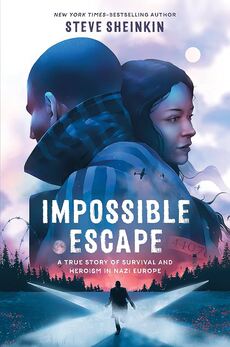 Recently, the Biography Clearinghouse interviewed author Steve Sheinkin about his latest nonfiction book, Impossible Escape: A True Story of Survival and Heroism in Nazi Europe. Action-packed and filled with dramatic tension and intricate historical details, Sheinkin shares the experiences of Rudi Vrba and Greta Sidonová, two Jewish teenagers during World War II. While the full video interview and transcript are available on our website, covering a range of questions regarding Sheinkin’s research and writing processes, we share an edited portion of it here on the CLA blog as an example of the complex decision-making that goes into writing narrative nonfiction for tween and teen readers. Interview Question As you were working on the book and revising it, how did you balance crafting a narrative that builds tension, which as you mentioned earlier, gets the reader hooked and builds the narrative towards that climactic moment, and the need for exposition, which is oftentimes in the case of this book exposition about very difficult topics? What were the moments where you knew that you had to interrupt the action, pause the action to provide that information for your readers? Steve Sheinkin’s Answer (edited for brevity): That’s doing narrative nonfiction for middle grade and YA, I think. That's my career essentially, trying to figure out how to do that…… I used to write textbooks. That's… you see how hesitant I was to confess that? But I used to write history textbooks where they don't have that problem. It's all just boring facts and figures and names and dates. And so I just don't want to ever do that. I'm still sorry and making amends for doing that. So I want it to be just story. And then I realize, wait a minute. I can’t be. I get jealous of people who write for adults because they could just say, “and then Pearl Harbor happened,” and then everyone knows what that means. I can't do that, and fair enough I shouldn't be able to, because it's unfair of me to assume that someone who's 12 or 14 has that background information, and they shouldn't have to, to pick up the book. I think that's part of what makes this, hopefully, makes one of my books valuable, is that they don't have to have background information…. I guess I hope it works that I start with just story…I am seeing all the best scenes where there's really well documented moments that have those elements of a scene that you want as a writer. .. You don't need to know them right away, but you do need to know them pretty early on, and that's why the first third of a book like this is always the hardest part. It’s kind of like a juggling act once the balls are going. It's okay. But getting them all in the air in the right order is the hard part. And so I'll write little bits of context. In this case the rise of Adolf Hitler, what the Nazis were doing. How anti-semitism was such, so central, to what the Nazis did, and and all of that… I end up writing way too much of that, and I always do, and then kind of pare it down until it starts to feel right, and I work with my editor on that kind of stuff more than any other part of the book. I don't like to write the whole thing and then send it to her. I specifically like to try to write that first third as a draft and send it to her because it's just never, never good at first. It always has that problem of being clunky, and either not starting fast enough or we're not getting to the context soon enough, and those are kind of at odds with each other. You can get it right with enough back and forth, and trial and error… It's kind of like making a movie. You film both. You film all the scenes. You don't have to decide right away what order you're gonna edit them together in, but you know they're all going to be there.
Punctuating Narrative with Exposition
Embracing Point of View in Nonfiction Writing
Mary Ann Cappiello teaches courses in children’s literature and literacy methods at Lesley University and is a founding member of The Biography Clearinghouse. She is co-chair of CLA's Expert Class committee and a former chair of NCTE’s Orbis Pictus Award for Outstanding Nonfiction K-8. Xenia Hadjioannou is associate professor of language and literacy education at the Berks campus of Penn State University. She is president of CLA and co-editor of the CLA Blog. She is a founding member of The Biography Clearinghouse. By Ruth Lowery, Chair of CLA's Nominating CommitteeNow more than ever the work of the CLA is of utmost importance for teachers, students, librarian, parents, and all stake holders involved in expanding the landscape of children’s literature. Each year CLA elects three new candidates to serve a three-year term. This year, we have 12 amazing scholars comprising authors, teachers, and teacher educators who have accepted the nomination to be on the ballot for the 2024-2026 spots. The election will be held October 2 - 12, 2023 and all CLA members will have the opportunity to select their top three candidates. We look forward to welcoming the newly elected board members during the CLA Breakfast at the NCTE Convention in Columbus, OH. This post serves as a brief introduction to our 12 nominees. Detailed candidate statements are available on the Elections page. Meet the CandidatesRuth Lowery is Associate Dean for Graduate Studies and Faculty Affairs in the College of Education of the University of North Texas. She is immediate past president of CLA and chair of the Nominating Committee. Barbara Zulant Kiefer |
|
My first presentation for Barbara’s class was on the Brambly Hedge series. I had read the books before (in Spanish), but she encouraged me to look deeper: to put the child’s eye at the center; to see how color, and perspective, and composition convey meaning; how images and words combine to create this wonderful world for us to enter and explore as we read. We later went together on a study trip to Britain, and it was hard not to see glimpses of Brambly Hedge as we drove across the countryside and discussed fantasy books.
I traveled all the way from Colombia to study with Barbara, and she not only guided me along the way, but also made me feel right at home. |
Knock at a Star: A Child’s Introduction to Poetry by X. J. Kennedy and Dorothy M. Kennedy
Submitted by Lisa Pinkerton
|
As a doctoral student at The Ohio State University, I had the privilege of co-teaching the Poetry for Children course with Barbara. I gained a deep appreciation for children’s poetry. Each week, Barbara brought a stack of books to class featuring a wide range of poetry tones, topics, and themes, from serious to silly, sports to school, and seasons to science. We immersed ourselves in poetry. Barbara believed that poetry for children “should reflect the real emotions of childhood,” rather than being “coy, nostalgic, or sentimental.” (1) Many of the best children's poems feel joyful, sad, angry, or fanciful - all the emotions that real children experience. This semester, I’m teaching Poetry for Children and I’m so grateful that Barbara’s poetic sensibility has left its indelible mark on the course and on my teaching.
|
Where the Wild Things Are by Maurice Sendak
Submitted by Melissa Wilson
|
The Merriam Webster Dictionary’s changes the spelling to picture-book.
Google puts a blue line under the word. Word puts the dreaded red squiggle under it. I’m not sure how Adobe Acrobat feels about its spelling. But I do know how Barb Kiefer felt. It was always one word—no space, no hyphen—just one word. When I asked her why she spelled the word that way, she was very clear. A picturebook has text and illustrations that amplify each other; they don’t stand alone. And then she would pull out a picturebook (my favorite example was Where the Wild Things Are) and show you how it worked. There was no space between the pictures and the book’s text. Picturebook—now every time I get the red squiggle or blue line or spell checked, I smile and remember Barb! |
The Potential of Picturebooks: From Visual Literacy to Aesthetic Understanding by Barbara Z. Kiefer
Submitted by Trish Bandré
|
While studying at The Ohio State University, Janet Hickman, my adviser, recommended Barbara’s book. I had always been drawn to picturebooks and was compelled to learn the “why” as well as the “what” of this unique art form. This book opened my eyes in numerous ways and gave me the words to name and describe what I had loved about picturebooks but didn’t know how to express. A few years later, Dr. Kiefer joined the faculty at OSU, and I was fortunate enough to have her on my dissertation committee. I will always be grateful for her wisdom and insight.
|
The Wall in the Middle of the Book by Jon Agee
Submitted by Kathy G. Short
|
One of Barb’s major contributions to the field was her book on The Potential of Picturebooks: From Visual Literacy to Aesthetic Understanding (1995). She argued that a picturebook is a unique art object in which the images and words combine in a transformative way, so the reader comes away with more than the sum of the parts. Her own love of art and background in the field of art came together with her passion for children’s books to challenge the rest of us to explore the intersection of art and picturebooks in deeper ways. She enjoyed picturebooks that used the design of the book in meaning-making as occurs in The Wall in the Middle of the Book by Jon Agee, where the gutter is an essential element of the story.
|
Shapes, Lines, and Light: My Grandfather’s American Journey by Katie Yamasaki
Submitted by Jongsun Wee
|
It’s no secret that Dr. Kiefer loved picturebooks. She had so much respect for illustrators. Dr. Kiefer emphasized the interdependence of text and pictures in our class at The Ohio State University. She guided us to pay attention to illustrations and think about why the illustrator made certain choices of colors, shapes, lines, and light. In class, we enjoyed finding information hidden in the illustrations. I am forever grateful to Dr. Kiefer for opening the door of the picturebook world to me. I will keep sharing her love of picturebooks with my students.
|
Make Way for Ducklings by Robert McCloskey
Submitted by Cynthia A. Tyson
|
The Potential of Picturebooks: From Visual Literacy to Aesthetic Understanding, was not wisdom at the top of the museums of art mountains, but in one of my children's literature courses, was Barbara, holding open the 1942 Caldecott winner Make Way for Ducklings so gently said, “Isn’t this just beautiful? We should always explore the potential of the picturebook as an art object.” And it is still true, no matter how many books I read—when I go out into the world of children’s literature, I always open my eyes and heart wide for the aesthetic appreciation of the picture book as a work of art.
|
The Mountains of Tibet by Mordicai Gerstein
Submitted by Denise Dávila
|
Prior to studying with Dr. Kiefer, I loved children’s literature. However, I was not attuned to engaging with picturebooks as aesthetic art objects in and of themselves. I remember one evening in which Barbara walked our class through each of Gerstein’s illustrations of The Mountains of Tibet, which School Library Journal describes as “a beautifully gentle look at one human being dealing with life’s choices and possibilities'' via the journey of a Tibetan woodcutter’s death and reincarnation. Because of Barbara, I came to love this book and to appreciate how illustrators’ use of shape and white space advance the story.
|
Blue: A History of the Color as Deep as the Sea and as Wide as the Sky by Nana Ekua Brew-Hammond, illustrated by Daniel Minter
Submitted by Mary Ann Cappiello
|
Taking “The Art of the Picturebook” with Barbara at Teachers College deepened my understanding of the picturebook as both an art form and a teaching tool. Barbara taught me how the art in a nonfiction picturebook - the lines, shapes, and colors; the art historical references; the choice of medium - all work together to convey information to the reader and elicit an emotional response within the reader. In Blue, this year’s Orbis Pictus winner, illustrator Daniel Minter uses contrasts: close-ups and panoramas, warm colors and shades of blue, varying lines and shapes. These all deepen readers’ understanding of and emotional connections to the color blue across different cultural contexts, time periods, and technologies.
|
Yasmin the Painter by Saadi Faruqi, illustrated by Hatem Aly
Submitted by Caitlin L. Ryan
|
One day while I was a graduate student, a conversation with Dr. Kiefer and others turned to nurturing children’s artistic abilities. Barb was frustrated that classrooms too often limited children’s art to basic materials like pencils and crayons on small pieces of paper. She said, passionately, “You’ve got to give them measles!” We were very confused…until we realized she’d said EASELS. Now that sounded like the Barb Kiefer we knew! The momentary misunderstanding was something we laughed about for years, and its message stuck with me. Barb saw every child as an artist. She knew children could see and create in ways that could express ideas about the world and teach us as adults in the process. She’s the reason the covers of Language Arts (2) featured children’s art from 2007-2010, the reason I teach about arts-based responses to literature in my courses, and the reason my son has an easel in his playroom now.
|
Language Arts by National Council of Teachers of English
Submitted by Laurie Katz
|
Barb and I came into the Department of Teaching & Learning at the same time – 2003. I remember being at a faculty meeting before I officially started where I learned that Barb was also coming to the department. Everyone was extremely excited to have someone of her caliber as the Charlotte Huck Chair. Before I started at OSU in Integrated Teaching & Learning, I really didn’t know much about the esteemed reputation of the children’s literature faculty at the university. It wasn’t until I became one of the Language Arts co-editors with Barbara that I learned about the field of children’s literature. Her love, passion, enthusiasm, and expertise permeated throughout the group of editors. One of her roles was being in charge of the 3rd issue of each volume, which was specially geared towards children’s literature. Many of the covers of these issues and others came from Barb’s network, including the two issues above.
|
Hiroshima No Pika by Maruki Toshi
Submitted by Hilary Brewster
|
When I was a doctoral student in the Literature for Children and Young Adults program at The Ohio State University, I was more on the YA side than the kid lit side, having previously taught high school English. However, our program luckily required us to take various children’s literature courses with Dr. Barbara Kiefer. In one of them, she shared with us the heartbreaking and exquisite picturebook Hiroshima No Pika, an account of the nuclear annihilation of the titular city. Not your “typical” children’s book, to be sure. With this lesson and others, Dr. Kiefer taught us that it is not only recommended, but necessary, to integrate potentially troubling literature into classrooms of all levels in order to have conversations about empathy, community, and, subsequently, vulnerability. I have shared this book with my upper-level college students who often cite it as one they, too, remember years later.
|
Adventurous Women: Eight True Stories About Women Who Made a Difference by Penny Colman
Submitted by Evelyn Freeman
|
Barbara and I shared a commitment to increasing the awareness and appreciation of quality nonfiction for children. In February 2006, Barbara organized a symposium at OSU on nonfiction, which featured the author Penny Colman. Penny autographed this book for me at the symposium and wrote a long inscription that referred to my advocacy for nonfiction. Barbara was so knowledgeable about all genres of children’s literature. I will miss her and our wonderful discussions about books.
|
El Deafo by Cece Bell
Submitted by Sara Kersten-Parrish
|
Behind her ubiquitous rolling cart laden with books, I would frequently see Barb grab a title, thrust it at someone and say, “I know you’ll love this.” She took great value in knowing what her students would like to read. Barbara handed El Deafo to me, looked me in the eye, and said, “This book is important for you.” And, it was. When reading El Deafo, I felt seen for the very first time as someone who is deaf like the protagonist and author. Barbara saw me and saw the connection a book could bring.
|
The Ask and the Answer from the Chaos Walking series by Patrick Ness
Submitted by Michele D. Castleman
|
Dr. Kiefer was the queen of sharing books. When I first met her on a visit to OSU, I was amazed by how filled her office was with books. Throughout my time in the program, Dr. Kiefer hooked me on multiple authors and series, of which the Chaos Walking series stands out the most in my memory. When the second book came out in Great Britain, Dr. Kiefer ordered a copy from abroad so she could read The Ask and the Answer as soon as possible. She happily shared her beautiful, British hardcover with a long line of students one-by-one. As a teacher, I have worked to embody Dr. Kiefer’s spirit of creating excitement over young adult and children’s literature. My office is overrun with books. I joke with my colleagues that someday I will die happy under a pile of my fallen books. But, more importantly, I have followed her example and happily share personal copies of my own books with students.
|
Miss Rumphius by Barbara Cooney
Submitted by Ann Neely
|
I first met Barbara Kiefer when we were both participating in a children’s literature conference in Glasgow, Scotland. Like Miss Rumphius on one of her many trips, I knew I had made a friend I’d never forget. We had lovely conversations over a glass of wine at the end of each day… some about children’s literature, of course, others about life as a professor and life in general. And, like Miss Rumphius, Barbara brought beauty to our world!
|
The Grey King by Susan Cooper
Submitted by Bettie Parsons Barger
|
Prior to studying fantasy with Dr. Kiefer, I often overlooked the details that connected past to present. She taught me that the setting is actually a character in fantasy; the time spent developing the storyworld mattered immensely. I could feel the damp, cool air as I walked beside Will Stanton in the dense fog of the Welsh mountains, adding to my suspense. That was one of the biggest joys of learning from Barbara; she broadened my perspective and understanding. Her insights pushed me to think deeply about children's literature in new ways. She challenged me to explore genres and topics I normally avoided and to consider the types of readers who might enjoy them. Her love of this genre, of children’s literature, has deepened my love of the field too.
|
The Book Woman of Troublesome Creek by Kim Michele Richardson
Submitted by Pat Scharer
|
Barbara’s work sharing books was truly a model for us all. She taught classes, worked with individual teachers, wrote books, conducted research and, most of all, shared her love of books. Her office overflowed with books, but if you’d ask her about one–chances are she could find it right away and discuss it with you. She didn’t have an easy road and overcame many challenges, but she knew it was worth it because the impact of books on lives is immense.
|
Wonder Walkers by Micha Archer
Submitted by Erika Thulin Dawes
|
Deepening my passion for picturebooks, Barbara gave me new lenses for viewing them, prompting me to see and experience so much more. Curious at her core, Barbara brought a spirit of inquiry to each book. She modeled how to go beyond, connecting with authors and asking questions about their composing and illustrating processes. Barbara provided new perspectives on the potential of children’s books across the curriculum and insights on how to get to know a wide range of young readers to build engaged communities. Learning with Barbara meant Wonder Walking through the world of books. I’m so grateful for the journey.
|
Koala Lou by Mem Fox, illustrated by Pamela Lofts
Submitted by Erin Reilly-Sanders
|
One of the first activities I remember from a Barbara Kiefer-style children’s literature class compared Koala Lou by Mem Fox (illustrations by Pamela Lofts) with Love You Forever by Robert Munsch (illustrations by Sheila McGraw). The viewpoint of a small koala trying to win her mother’s love through athletic prowess starkly contrasted to a parent’s (occasionally creepy) expressions of love as their child grows up, demonstrating that not all books read or marketed to children are written through their perspective. Above all, Barbara stressed the importance of adults “getting” children’s literature and the perspective that will best speak to its intended audience. Today, her quick discernment echoes in my mind as I read and share great books that have the child’s eye at the center.
Barbara, we Do love you! We always have, and we always will. |
Lisa Pinkerton is an Associate Clinical Professor at The Ohio State University. Her current roles with CLA include serving as a Board Member and as an Expert Class Co-Chair.
Erin Reilly-Sanders is an architect at Schooley Caldwell Associates and an independent scholar with a doctorate in children's literature from The Ohio State University.
Additional Tribute Comments
By Lauren Liang & Xenia Hadjioannou
As you take these first steps on the 2023-24 school year journey, we want to remind you of the CLA resources here for your support and growth. Below we list some of the many CLA offerings that we hope you will utilize this year for your classrooms.
The CLA Blog
CLA Notables Award Lists
Note: If you attend the annual NCTE Convention, you will not want to miss the Notables session, during which you will hear all about the books that made the Notables list that year. And, if you win our raffle at the CLA Breakfast, you may find yourself leaving the session with a full set of the books on that list.
|
From the CLA Blog
|
From CLA’s Video Library
(member exclusive) |
Journal of Children’s Literature
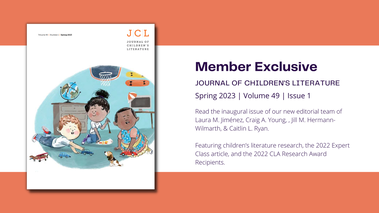
CLA’s semi-annual academic journal, The Journal of Children’s Literature, highlights scholarship in the field and contributes to vital conversations about children’s books and literacy education. The journal offers scholarly, peer reviewed feature articles and columns related to children’s literature. It also offers articles contributed by CLA’s committees, including an exploration of the years Notables books, an interview with the keynote speaker of the CLA Breakfast, a comprehensive report of our annual Expent Class, and contributions from the recipients of CLA awards.
CLA Breakfast at NCTE

In 2023, we are delighted to feature Traci Sorell as our keynote Breakfast speaker. When registering for the NCTE Conference, purchase your breakfast ticket and join us on Sunday, November 19th at 7:00 am!
|
From the CLA Blog
|
From CLA’s Video Library
(member exclusive) |
CLA Expert Class at NCTE
|
From the CLA Blog
|
From CLA’s Video Library
(member exclusive. Open access for September 2023) |
Student Special Events
|
From the CLA Blog
|
From CLA’s Video Library
(member exclusive)
|
Xenia Hadjioannou is Associate Professor of Language and Literacy Education at the Berks Campus of Penn State. She is President of CLA and co-editor of the CLA Blog.
By Andrea Page and Jackie Arnold, 2023 CLA Breakfast Chairs
What do teachers, teacher educators, and librarians want?
- Have I included authentic, culturally diverse literature?
- Am I choosing material easily integrated into lesson plans?
- Have I chosen different types of literary voices?
- Have I selected a diverse group of writing styles?
Add Native Children’s Authors and Books to Your List
Traci is a Keynote Speaker at this year’s National Council of Teachers of English (NCTE) conference in Columbus, Ohio. She will be a featured author at the Children’s Literature Assembly (CLA) Breakfast in November. Sign up for the conference and get a breakfast ticket to meet one of America’s current literary rock stars!
4 Ways to Integrate Traci’s Books in the Classroom
1) USE CORE QUESTIONS WHILE READING
|
Picture Book Core Questions about Relationships
We Are Grateful: Otsaliheliga (2018) Book description from publisher’s website A look at modern Native American life as told by a citizen of the Cherokee Nation The word otsaliheliga (oh-jah-LEE-hay-le-gah) is used by members of the Cherokee Nation to express gratitude. Beginning in the fall with the new year and ending in summer, follow a full Cherokee year of celebrations and experiences. Curriculum/Theme Connections: Family and kinship, personal narratives in poetic form, contributions of family members to society, expressing gratitude across four seasons. Vertical Divider
|
Middle Grade Core Questions about Justice / Injustice
Indian No More (2019) with co-author Charlene Willing McManis Book description from publisher’s website Regina Petit’s Umpqua family has always lived on the Grand Ronde Reservation. But when the federal government enacts a law that says Regina's tribe no longer exists, Regina becomes "Indian no more" overnight - even though her ancestors were Indian for countless generations, she lives with her tribe and practices her tribal customs. Having been forced from their homeland, the family enters the Federal Indian Relocation Program, and they move to Los Angeles. Regina finds a whole new world in her neighborhood and has never met kids of other races. Her neighbors have never met a real Indian. For the first time in her life, Regina faces racism personally. Curriculum/Theme Connections: History of tribal sovereignty and removal, effect of termination, identity, family and kinship, resiliency. |
2) USE T-CHARTS DURING OR AFTER READING
|
Powwow Day (2022)
Book description from publisher’s website River wants so badly to dance at powwow day as she does every year. In this uplifting and contemporary picture book perfect for beginning readers, follow River’s journey from feeling isolated after an illness to learning the healing power of community. Curriculum Connections: family events, competitions, writing a personal narrative (Write about a time when you were sick and missed out on something important to you.) |
|
Classified: The Secret Career of Mary Golda Ross, Cherokee Aerospace Engineer (2021)
Book description from publisher’s website Mary Golda Ross designed classified airplanes and spacecraft as Lockheed Aircraft Corporation’s first female engineer. Cherokee author Traci Sorell and Métis illustrator Natasha Donovan trace Ross’s journey from being the only girl in a high school math class to becoming a teacher to pursuing an engineering degree, joining the top-secret Skunk Works division of Lockheed, and being a mentor for Native Americans and young women interested in engineering. Curriculum Connections: Values - education, cooperation, humility, determination, perseverance, notable Native Americans, STEAM concepts. |
3) EXPERIENCE AUTHOR'S VOICE USING MENTOR TEXTS
Author’s voice appeals to the senses. Read the story aloud and LISTEN to how the sentences flow. What do you notice about the rhythm of the sentences? How do they connect to the story? Go on a scavenger hunt (download as PDF) to collect the words the author has chosen. How does the word choice plus the style of the sentences enhance the story?
|
We Are Still Here! Native American Truths Everyone Should Know (2021)
Book description from publisher’s website Twelve Native American kids present historical and contemporary laws, policies, struggles, and victories in Native life, each with a powerful refrain: We are still here! The book illuminates a tremendous amount of historical information in an engaging, classroom framework. Each fictionalized student presents on a topic that is relevant to the historical and present lives of Native American communities. Curriculum Connections: vocabulary unique to present day Native communities, education is important. |
Contenders (2023)
Book description from publisher’s website The true story of John Meyers and Charles Bender, who in 1911 became the first two Native pro baseball players to face off in a World Series. Charles Bender grew up on the White Earth Reservation in Northwestern Minnesota. John Meyers was raised on the Cahuilla reservation in Southern California. Despite their mutual respect for each other’s talents and their shared dedication to Native representation in baseball, the media was determined to pit them against each other. However, they never gave up on their dreams of being pro baseball players and didn’t let the supposed rivalry created by the media or the racism they faced within the stadium stop them. They continued to break barriers and went on to play a combined total of nine championships. Curriculum Connections: primary sources, bias in media, mascots, racism, prejudice, determination, perseverance, baseball history, role models. |
4) USE POETRY TO EXPRESS EMOTIONS
|
Poetry can be about any topic that matters to you, surprises you, and/or makes you look at everyday life in a new way. Poetry has many forms.
At the Mountain's Base (2019) Book description from publisher’s website A family, separated by duty and distance, waits for a loved one to return home in this lyrical picture book celebrating the bonds of a Cherokee family and the bravery of history-making women pilots. Curriculum Connections: Veteran’s Day, Memorial Day, World War II, pilots, women in the military. Vertical Divider
|
There are two sides to a story. How do the authors show many viewpoints in their story Mascot, a novel-in-verse?
Mascot (release date September 2023) Book description from publisher’s website In Rye, Virginia, just outside Washington, DC, people work hard, kids go to school, and football is big on Friday nights. An eighth-grade English teacher creates an assignment for her class to debate whether Rye’s mascot should stay or change. Now six middle-schoolers–-all with different backgrounds and beliefs–-get involved in the contentious issue that already has the suburb turned upside down with everyone choosing sides and arguments getting ugly. Told from several perspectives, readers see how each student comes to new understandings about identity, tradition, and what it means to stand up for real change. Curriculum Connections: prejudice, Native culture, stereotype, athletic competitions, debates, finding courage, cooperation. |
Meet Traci Sorell at the CLA Breakfast at NCTE
Come and meet Traci at the 2023 NCTE Conference in Columbus, Ohio on November 16-19, 2023. Registration for the conference and tickets for the CLA Breakfast will become available in late summer. Plan to register for the conference and sign up for the CLA Breakfast on Sunday to hear Traci talk about her books and her contributions as a children’s author. We hope to see you there!
CITATIONS LIST
Jackie Arnold is an associate professor at the Department of Teacher Education of the University of Dayton, Dayton, Ohio. Jackie is co-editor of the Dragon Lode, a children's literature journal published by the International Literacy Association Children’s Literature and Reading Special Interest Group (CL/R SIG).
By Mary Napoli and Angela Wiseman
In what way has children’s literature shaped or affected your research?
What’s your favorite children’s picturebook and why?
What advice would you have for early career scholars?
What are your future directions for literacy research, including ways of incorporating children’s literature?
What children’s literature scholar has influenced your work? Explain.
Angela Wiseman is a CLA Board Member and is co-chair of the 2023 Early Career Award Committee. She is an associate professor of literacy education at North Carolina State University.
By Nancy J. Johnson
Classroom Teachers
or
Literacy Coaches
or
Teacher Educators
to apply for the 2023 Bonnie Campbell Hill National Literacy Leader Award.
Who is Bonnie Campbell Hill and what is this award?
Bonnie Campbell Hill was a teacher, literacy leader, reader and writer, and a good friend of CLA. Bonnie worked extensively in elementary and middle schools, mentoring teachers around the world, and collaborating with them at state, national, and international conferences. Her teaching and writing (including nine books and numerous articles) centered around literature circles, writing instruction, classroom-based assessment, developmental continuums, portfolios, and student-led conferences. Following a cancer diagnosis 13 years ago, Bonnie dreamed of opportunities to continue her fierce advocacy for teachers as literacy leaders. In fall 2010, her family, friends, and colleagues launched Bonnie's Big Idea, a project to honor and maintain her literacy legacy. The Bonnie Campbell Hill National Literacy Leader Award is an outgrowth of Bonnie's Big Idea. It recognizes two literacy leaders annually, and is generously funded by Dr. Hill's family. CLA is honored to serve as the home for this national award.
What does this award mean for you?
This award recognizes your role as a literacy leader and provides funding ($2,500 plus $150 in professional materials published by Heinemann) to support your own big literacy-related ideas. We recognize the role you play as a literacy leader, whether in your classroom, your school, or even your greater educational community. Now it's time to dream about -- and create -- opportunities that turn your challenges, your questions, your professional needs, even your hopes and dreams into reality. You can do that through a Bonnie Campbell Hill National Literacy Leader Award.
What goes into your application? How do you apply?
Start with your own big ideas about literacy learning/teaching and professional development. If you were granted $2,500, how could you use that money to support your work as a literacy leader for grades K-8? Your application must include a proposed plan, a budget, your resume or vita, and a letter of support from an administrator/supervisor. Your proposed plan could focus on attending a workshop, class, or conference with colleagues. OR you could design classes, workshops, or literacy-focused events to support your work as a literacy leader. OR You could sponsor a professional book study for a team of colleagues. OR ...
You're welcome to be creative as you plan your proposal, but remember to use the award requirements as you prepare your application. These include: membership in both NCTE and CLA and submission of all application materials no later than August 10, 2023. To learn how to apply, access the 2023 BCH National Literacy Leader Award Application Call (PDF, Word Document). Further Information about the award is available on the award page on the CLA Website.
If you're unsure whether you and your ideas are award-worthy, you might find it valuable to "meet" some of the prior BCH Award recipients and learn about their proposals.
|
|
Questions? Feel free to contact Nancy Johnson at [email protected].
Where to submit? Send your proposal to Mary Ellen Oslick at [email protected]. Remember, applications are due by August 10th. |
Authors:
CLA Members
Supporting PreK-12 and university teachers as they share children’s literature with their students in all classroom contexts.
The opinions and ideas posted in the individual entries are those of the individual authors and do not necessarily reflect the opinions or views of CLA or the Blog Editors.
Blog Editors
contribute to the blog
If you are a current CLA member and you would like to contribute a post to the CLA Blog, please read the Instructions to Authors and email co-editor Liz Thackeray Nelson with your idea.
Archives
May 2024
April 2024
March 2024
February 2024
January 2024
December 2023
November 2023
October 2023
September 2023
August 2023
May 2023
April 2023
March 2023
December 2022
November 2022
October 2022
September 2022
August 2022
June 2022
May 2022
April 2022
March 2022
February 2022
January 2022
December 2021
November 2021
October 2021
September 2021
August 2021
June 2021
May 2021
April 2021
March 2021
February 2021
January 2021
December 2020
November 2020
October 2020
September 2020
August 2020
June 2020
May 2020
April 2020
March 2020
Categories
All
Activism
Advocacy
African American Literature
Agency
All Grades
American Indian
Antiracism
Art
Asian American
Authors
Award Books
Awards
Back To School
Barbara Kiefer
Biography
Black Culture
Black Freedom Movement
Bonnie Campbell Hill Award
Book Bans
Book Challenges
Book Discussion Guides
Censorship
Chapter Books
Children's Literature
Civil Rights Movement
CLA Auction
CLA Breakfast
CLA Expert Class
Classroom Ideas
Collaboration
Comprehension Strategies
Contemporary Realistic Fiction
COVID
Creativity
Creativity Sponsors
Critical Literacy
Crossover Literature
Cultural Relevance
Culture
Current Events
Digital Literacy
Disciplinary Literacy
Distance Learning
Diverse Books
Diversity
Early Chapter Books
Emergent Bilinguals
Endowment
Family Literacy
First Week Books
First Week Of School
Garden
Global Children’s And Adolescent Literature
Global Children’s And Adolescent Literature
Global Literature
Graduate
Graduate School
Graphic Novel
High School
Historical Fiction
Holocaust
Identity
Illustrators
Indigenous
Indigenous Stories
Innovators
Intercultural Understanding
Intermediate Grades
International Children's Literature
Journal Of Children's Literature
Language Arts
Language Learners
LCBTQ+ Books
Librarians
Literacy Leadership
#MeToo Movement
Middle Grade Literature
Middle Grades
Middle School
Mindfulness
Multiliteracies
Museum
Native Americans
Nature
NCBLA List
NCTE
NCTE 2023
Neurodiversity
Nonfiction Books
Notables
Nurturing Lifelong Readers
Outside
#OwnVoices
Picturebooks
Picture Books
Poetic Picturebooks
Poetry
Preschool
Primary Grades
Primary Sources
Professional Resources
Reading Engagement
Research
Science
Science Fiction
Self-selected Texts
Small Publishers And Imprints
Social Justice
Social Media
Social Studies
Sports Books
STEAM
STEM
Storytelling
Summer Camps
Summer Programs
Teacher
Teaching Reading
Teaching Resources
Teaching Writing
Text Sets
The Arts
Tradition
Translanguaging
Trauma
Tribute
Ukraine
Undergraduate
Using Technology
Verse Novels
Virtual Library
Vivian Yenika-Agbaw Student Conference Grant
Vocabulary
War
#WeNeedDiverseBooks
YA Lit
Young Adult Literature

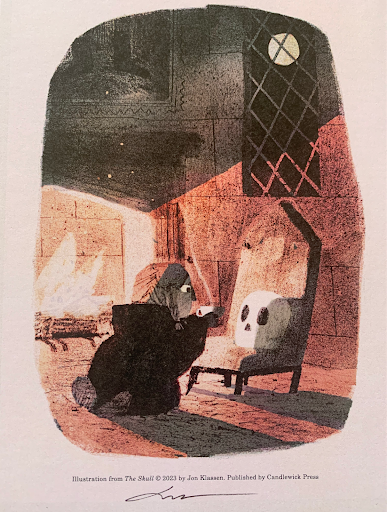
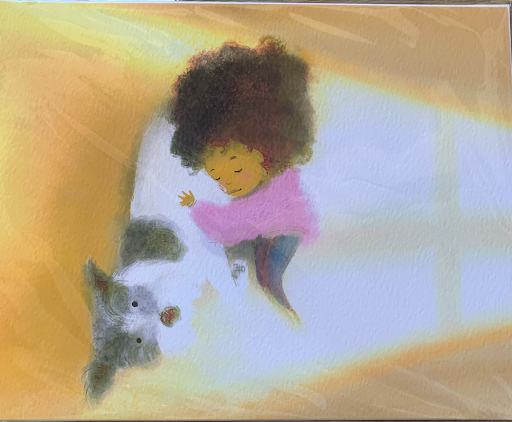

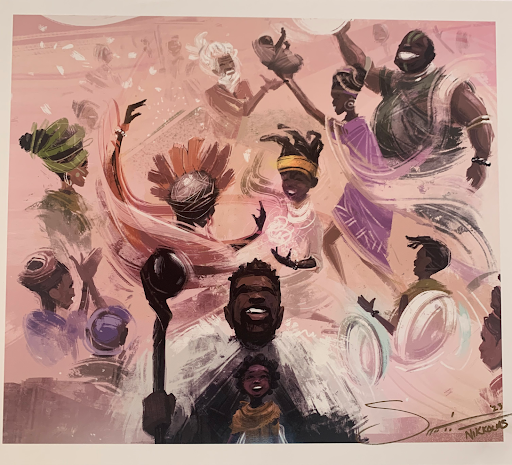
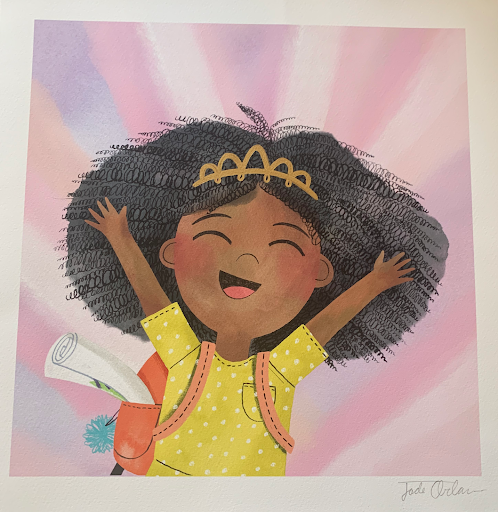
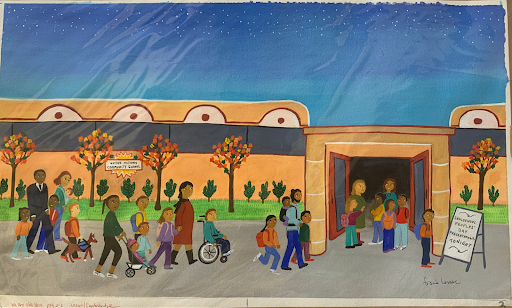
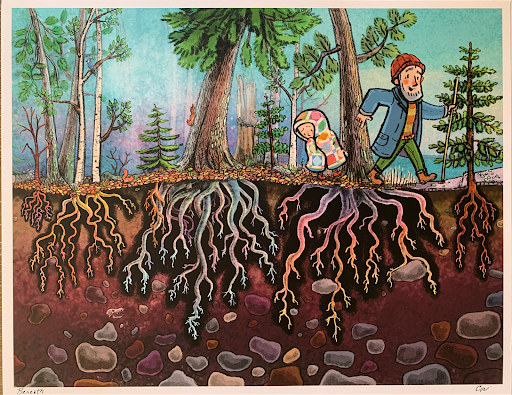
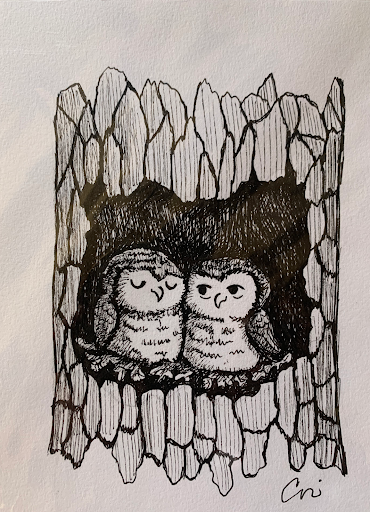
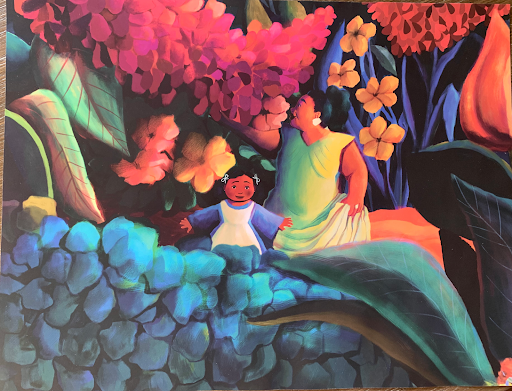
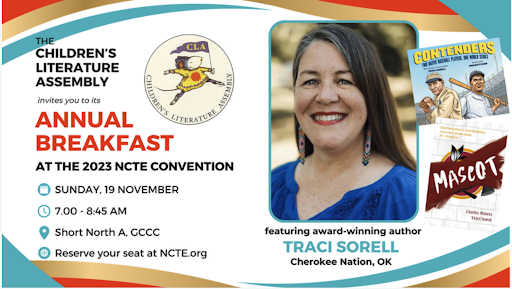
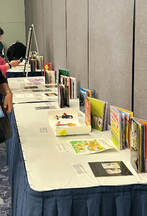
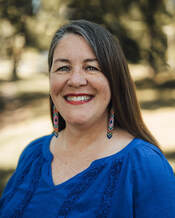
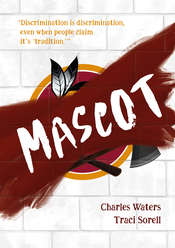
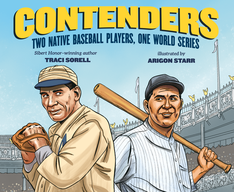
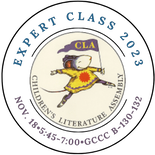
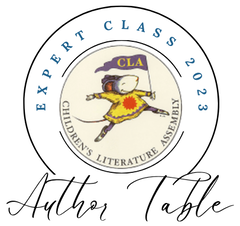
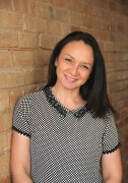
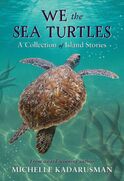

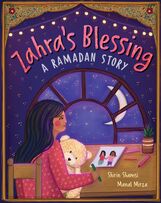
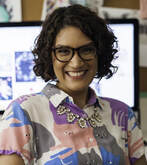

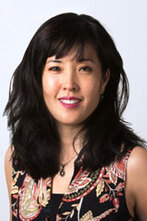
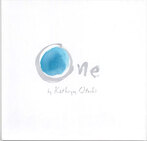
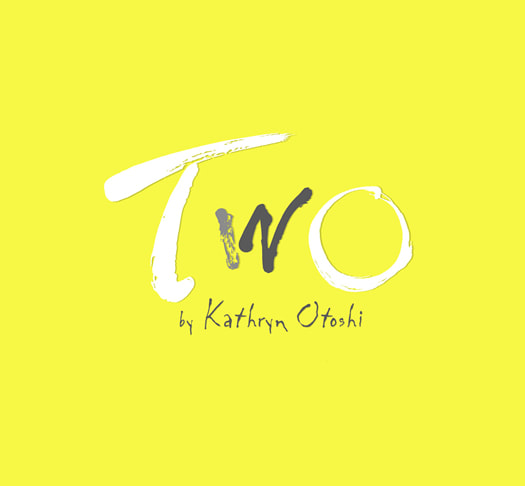
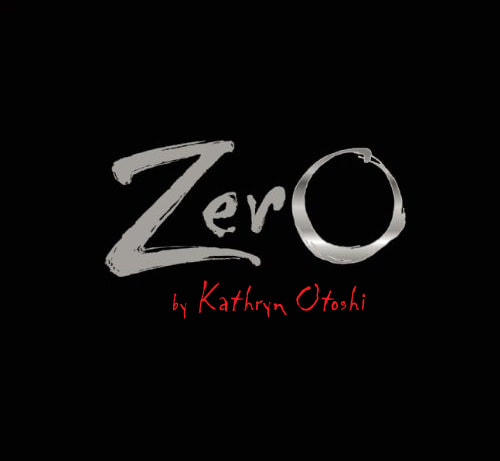
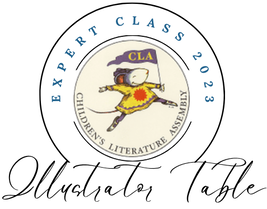
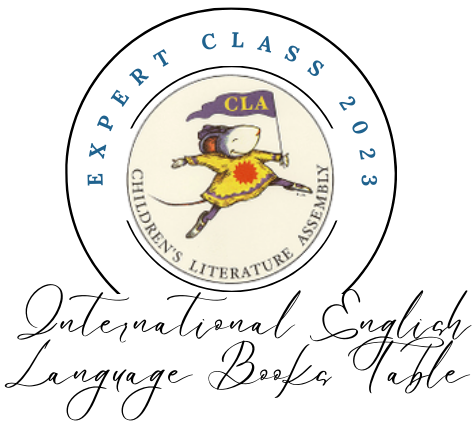
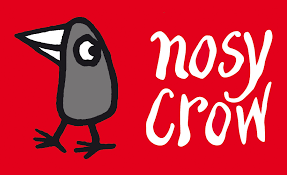

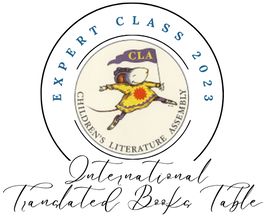
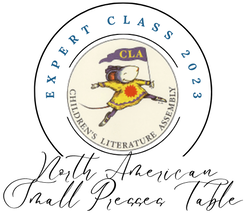
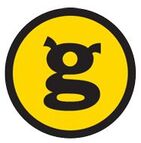


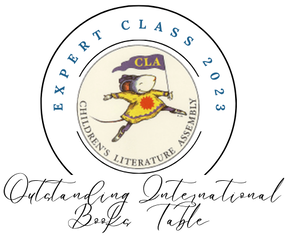

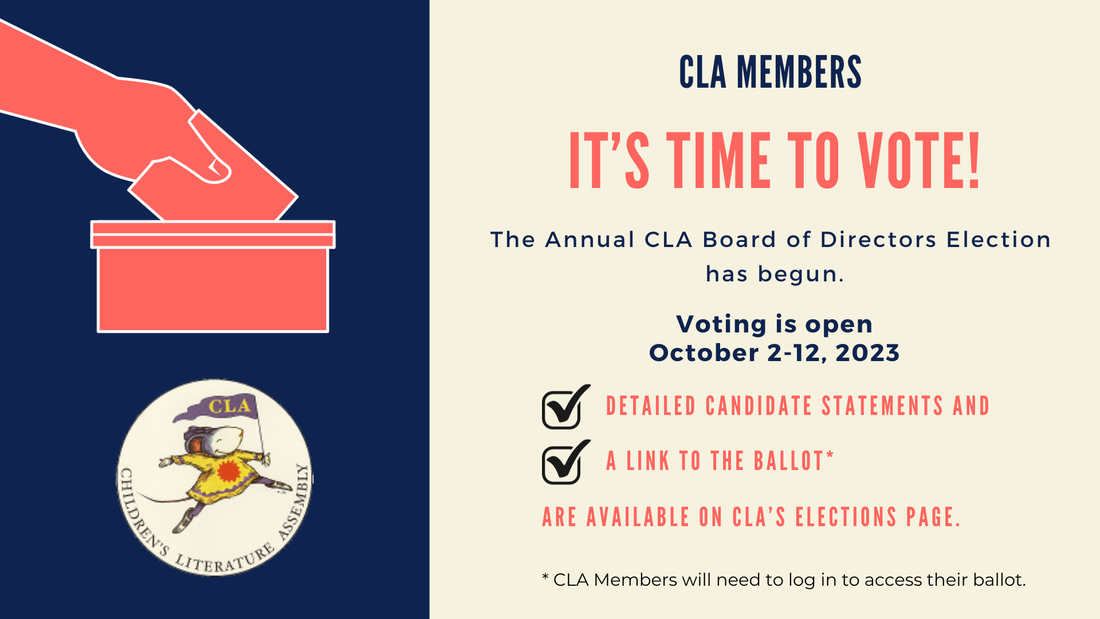
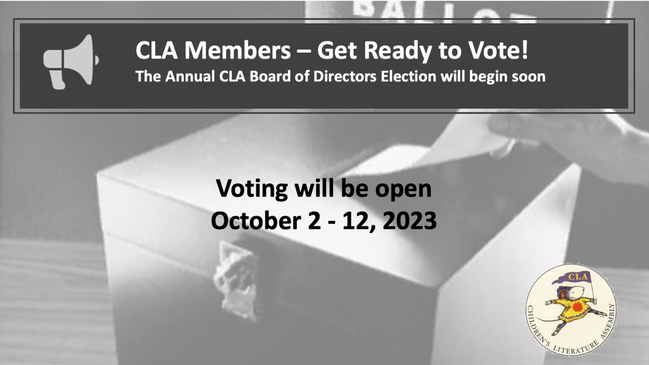

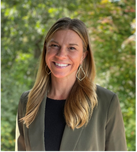





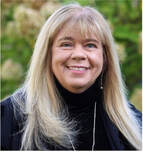
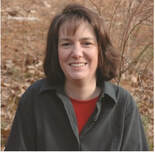
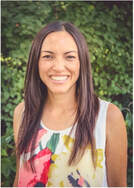
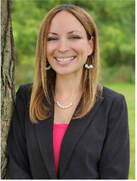
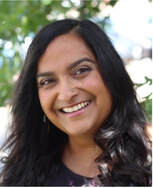
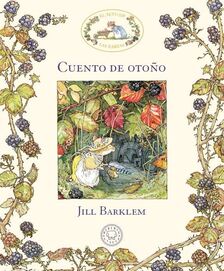
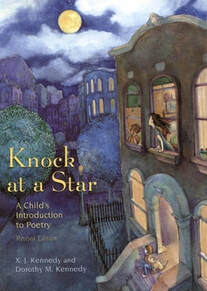
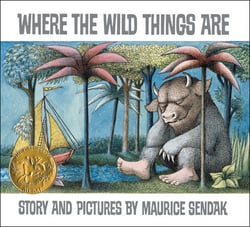
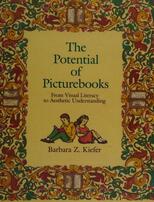
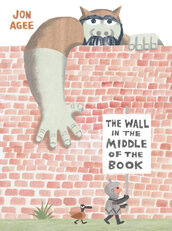
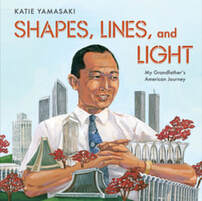
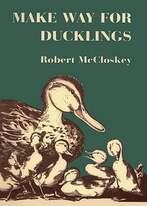
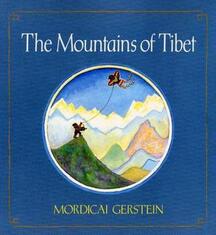
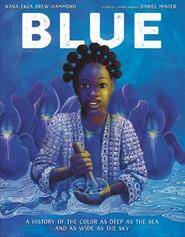
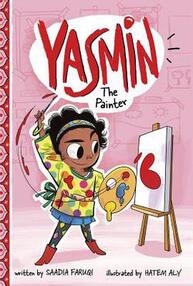
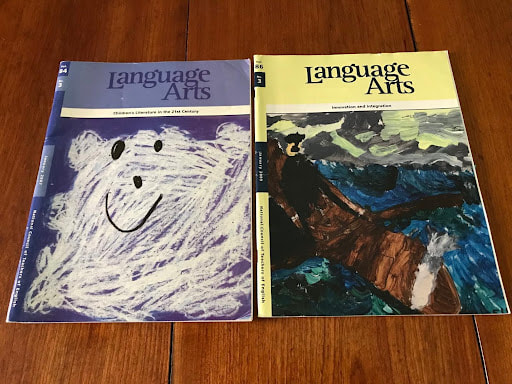
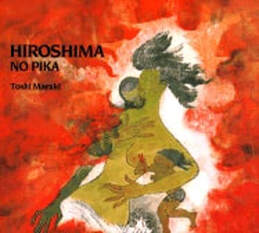
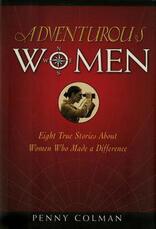
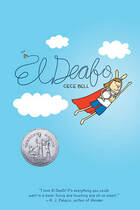
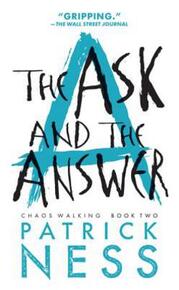
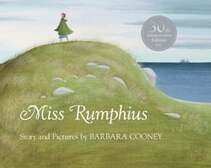
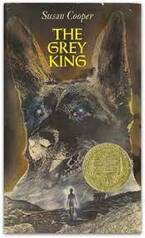
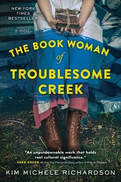
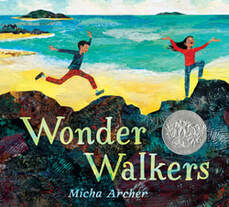
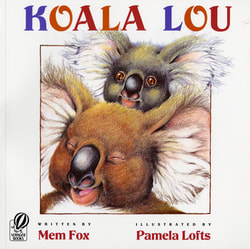
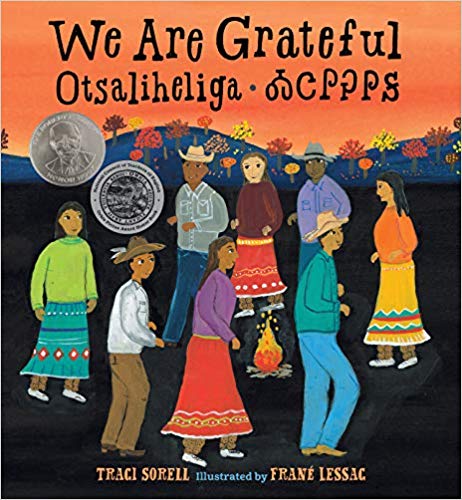
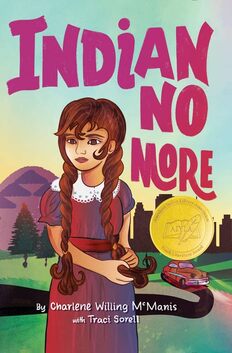
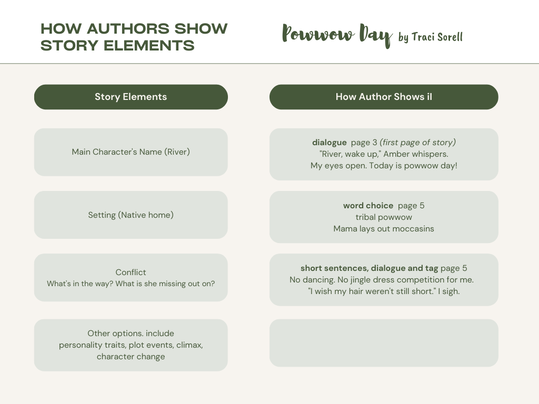
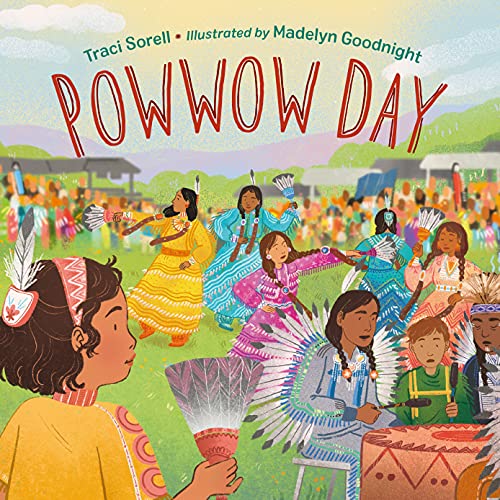
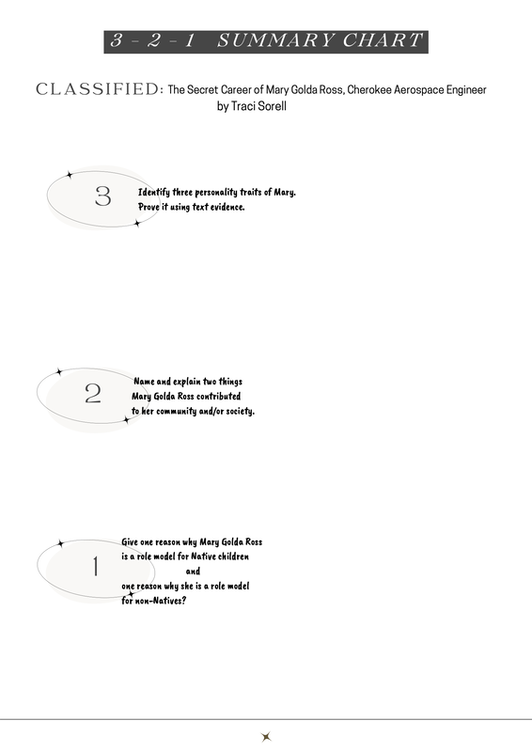
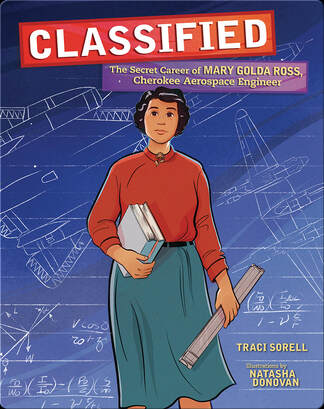
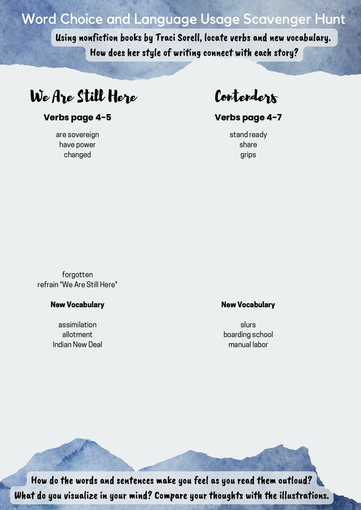
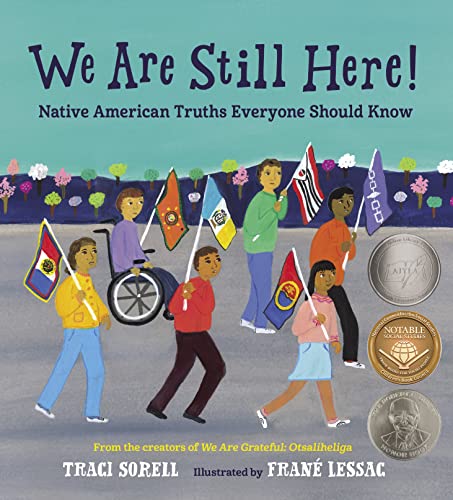
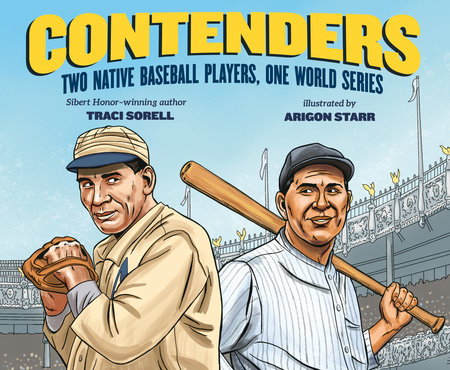
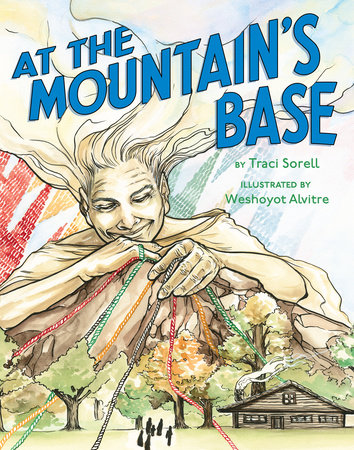
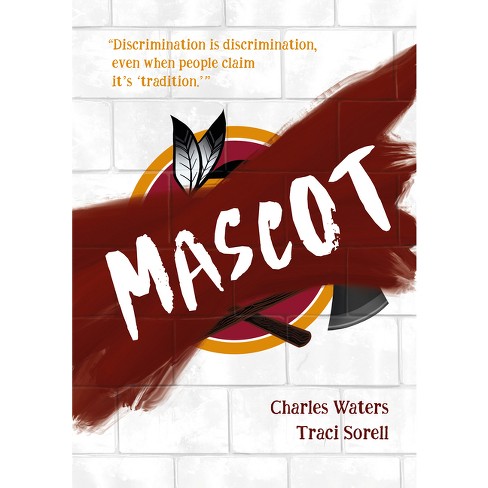
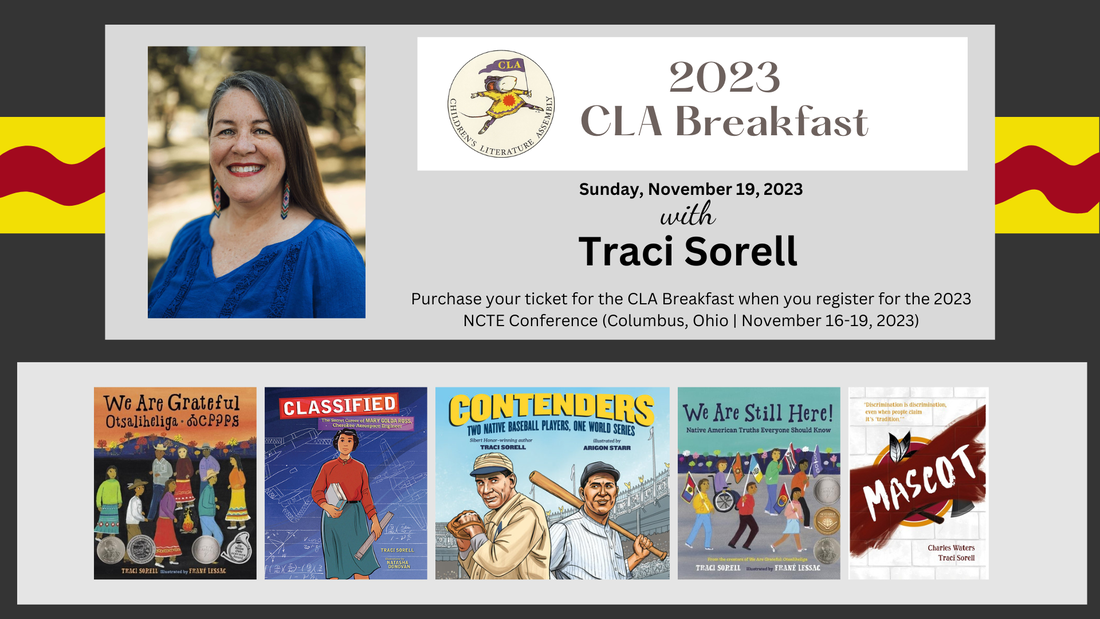


 RSS Feed
RSS Feed